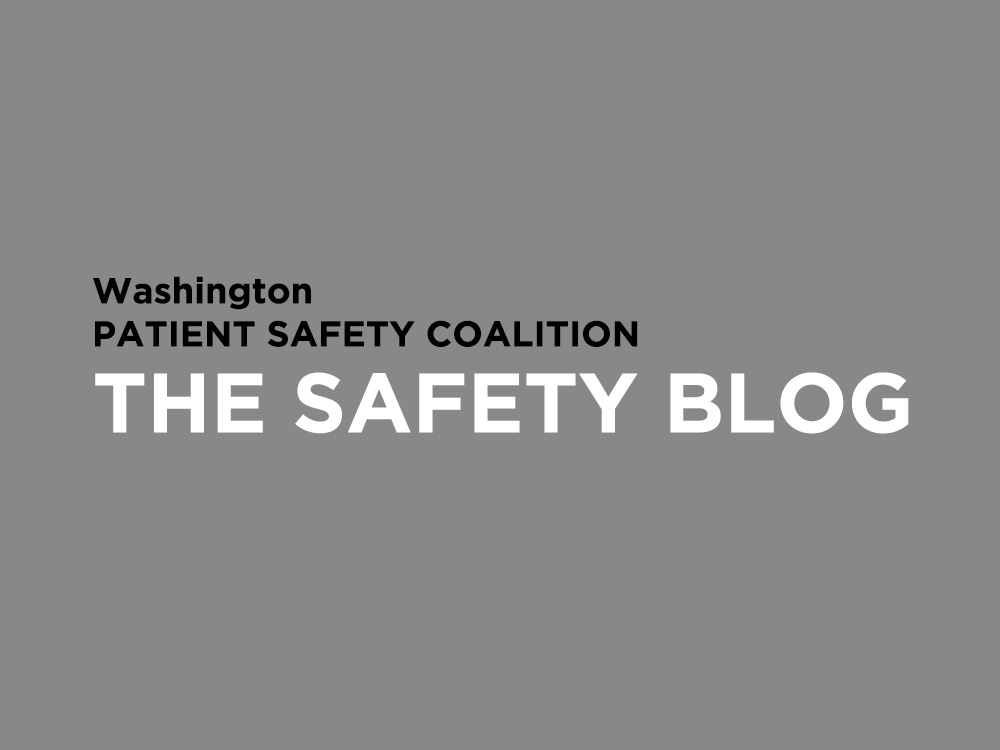- FHCQ Foundation for Health Care Quality
- COAP Care Outcomes Assessment Program
- Spine COAP Care Outcomes Assessment Program
- SCOAP Care Outcomes Assessment Program
- OBCOAP Care Outcomes Assessment Program
- CBDR
- Smooth Transitions
- WPSC Patient Safety Coalition
- Bree Collaborative Bree Collaborative
- Health Equity Health Equity
- Admin Simp
- Contact Us
Three Reasons Not to Keep a Personal Medicine List

Three Reasons Not to Keep a Personal Medicine List
by Miriam Marcus-Smith, RN, MHA
Program Director, Washington Patient Safety Coalition
Keeping a personal medicine list is an activity that combines two of the Washington Patient Safety Coalition’s priorities: engaging patients and families in their care, and improving medication-related safety.
Here’s what should be on a medicine list, at a minimum: the name of the medicine, the dose, its frequency, and purpose. Other information, such as side effects, can be included. The list should include all medicines being used both prescription and other medicines, regardless of source, purpose, or frequency, and shared with health care providers at every visit.
This sounds pretty simple, so why doesn’t everyone keep one? Here are three examples from people who will remain anonymous, but whom I know quite well:
Overconfidence
This person, a health care professional working in the field of patient safety and quality, was well aware of the rationale for keeping a list, but felt that since she used “only” two prescription medicines she could remember them and didn’t need to write them down…until one day when she had to see a physician urgently for an acute eye problem. This physician was at a clinic the person did not normally seek care at, and so had no record of her current or past meds. Here is how the conversation about meds went:
MD: So what meds are you taking?
Ms. Overconfident: Just Medicine X, and Medicine…dang, I can’t remember the name.
MD: What is it for?
Ms. O: For high blood pressure…wait, wait, I’ll remember it. I know it’s not an ACE or an ARB, though.
MD: Is it A? B? C?
Ms. O: It’s a blue pill, it’s 40 mg, I take it once a day…
MD: Is it D? E? F?
Ms. O: That sounds right. I’m pretty sure it’s Medicine E.
So Medicine E was entered into the record, the eye examined, an antibiotic prescribed, and the patient sent off. As soon as she got home she checked her meds and lo and behold! It was not Medicine E, but Medicine A. Luckily in this case there was no problem with interactions between the antibiotic and Medicine E. Ms. O was also embarrassed that in this low-stress situation she could not correctly identify the medication, and worried what would happen in an emergency. What did Ms. O do? She entered her prescription meds into the Notes section of her primitive cell phone.
Blissful ignorance
The second person is a highly-educated man in excellent health who takes no prescription medicines and rarely uses over the counter meds, but does use a large number of dietary supplements every day, some of which I had never heard of. When asked if he kept a list of them, he said they were harmless because they all were natural, and he hadn’t experienced any ill effects. His wife does not know what he uses. I ran through an example with him: he is injured and unconscious, and taken to the hospital. When asked if he is taking any medicines, his wife can’t provide a list. He is given a medicine to treat his injuries, but it has a dangerous interaction with one of the supplements he is using. At this point I could almost see the light bulb above his head: he was truly ignorant (uninformed) about the possibility of drug-drug interactions, especially when “natural” substances are involved.
Fear of shaming
Another reason for not keeping a medicine list – or, more accurately, for not telling a provider about one’s meds – is provided by another person who is well-educated and in excellent health. She gets her health care in a large health maintenance organization, and her provider knows what prescriptions she is getting. She uses an even larger set of supplements, including herbs obtained from complementary providers (acupuncturists and herbalists). When I asked her if her physician knew what she was taking, she said no, she hadn’t shared this information. Why? “Because I know she’ll judge me for using alternative medicines and providers.”
The morals of the story
Knowing the right thing to do doesn’t mean we do it. Sometimes it takes a low-risk close call to make us change our behavior.
Formal education and a high level of literacy (which is not the same as health literacy) do not necessarily create understanding of basic principles of medication safety, nor always lead to appropriate action.
Sometimes providing just the right dose of information at the right time can activate a person.
As health care providers, we must be mindful of our own attitudes and beliefs and be aware of our verbal and non-verbal communication, including body language and tone of voice. If we make offhand remarks about ‘non-traditional’ providers, our patients who seek care from them may choose not to share important information with us.
For more information about medicine lists and other resources for patients and families, visit www.mymedicinelist.org
Comments? Share with us here.
Recent Posts
- TakeCharge This Patient Safety Awareness Week: 5 Steps to Safer Healthcare
- Stigma & Bias in Healthcare: The Obstacles, Consequences and Changes Needed
- Agility in Crisis: How The Everett Clinic responded to COVID-19
- Collaboration over Competition: How Pediatric Hospitals Can Thrive When They Work Together
- Reducing Stress for Health Professionals During the COVID-19 Pandemic

